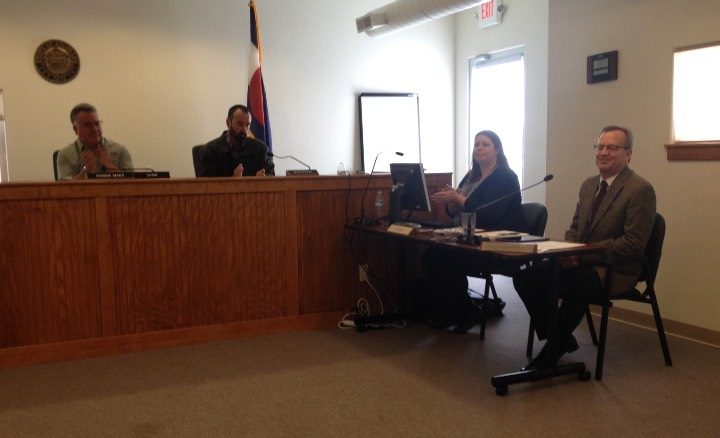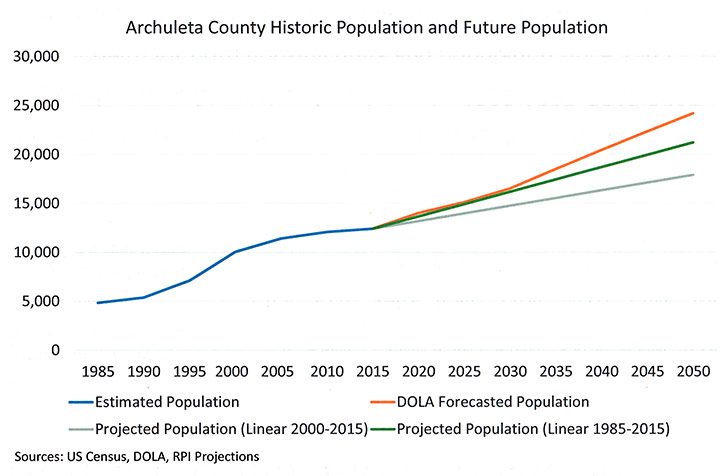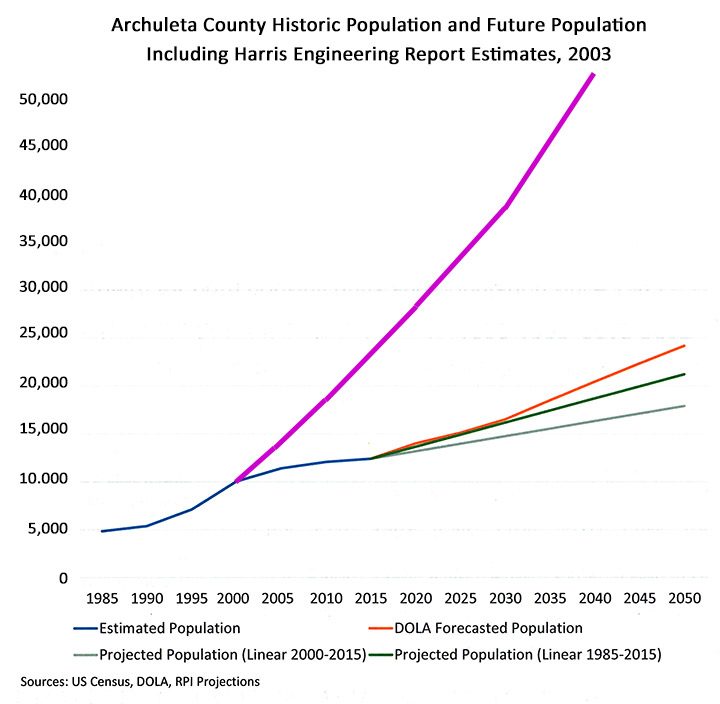WHEREAS, on March 29, 1973, the last American troops were withdrawn from South Vietnam, thus ending military involvement in what was the longest war in our country’s history…
— from the proclamation read at the March 19 Archuleta Board of County Commissioners meeting
The Archuleta Board of County Commissioners held their regular meeting yesterday afternoon, March 19 — with our new County Administrator, L. Scott Wall, seated at the table nearby, although the meeting was facilitated mainly by interim County Administrator Greg Schulte, who’s been at the administrative helm since the departure of former County Administrator Bentley Henderson in the summer of 2018.
For his dedication and effort over the past few months, Mr. Schulte received some appreciative applause from the BOCC and audience, at the conclusion of the meeting.

I imagine it’s not an easy job, serving as administrative head of a government of 160 or so employees… in a community of 13,000 full-time residents… most of whom are probably disappointed, in one way or another, with County services. (I once had a staff of six working for the Pagosa Daily Post, and that was way too many employees for me to handle.)
The meeting itself, yesterday, was mildly entertaining. I hope to discuss Finance Director Larry Walton’s budget presentation tomorrow, in Part Two. But immediately prior to Mr. Walton’s slide show, we had a proclamation read by the Sarah Platt Decker Chapter of the National Society, Daughters of the American Revolution. That proclamation was unanimously approved by our County commissioners — Ronnie Maez, Steve Wadley and Alvin Schaaf.
The Chapter members then posed for photos, alongside the Commissioners and some of the veterans in the audience who had served in the Vietnam War. One of the flags unfurled for the photo bore the message: “Our Cause Was Just.”
The BOCC proclamation concluded:
NOW THEREFORE, the Board of Commissioners of Archuleta County, Colorado, do hereby proclaim March 29, 2019 as VIETNAM WAR VETERANS DAY and invite all citizens in both public ceremonies and in private thoughts and prayers to gratefully acknowledge our Vietnam Veterans.
I was not one of the 58,000 or so American soldiers killed in that unfortunate and ultimately unpopular war — although my draft lottery number was 6 (out of a possible 365) the year I turned 18, and although the draft boards had been instructed to induct the lowest lottery numbers first. Instead, I was classified initially under a student deferment, and then later as a Conscientious Objector.
The young men who were smart enough, and wealthy enough, to attend college back in the late 1960s and early 1970s, were exempt from the draft. So a disproportionate percentage of the soldiers killed in Vietnam were young men of color. Just one more example of “white privilege.”
Nor was I one of the 2 million Vietnamese civilians killed during that terrible war.
As we see in the above photograph, the Sarah Platt Decker Chapter turned out a decent number of members for yesterday’s proclamation and photo opportunity. We might note, however, the general absence of young women in the photograph. Presumably, any young Chapter members were unable to attend because they were gainfully employed — and unable to attend an early afternoon meeting? Although it’s quite possible the Chapter does not have any young members.
The absence of young women in our community — and the absence of young men — is one of the central themes of this editorial.
I had attended a different meeting the previous day, Monday March 18, at the offices of the San Juan Water Conservancy District. I’m a member of that district’s Board of Directors, and we had our own mildly entertaining meeting — with a much smaller audience and without any flags or photo opportunities.
One of the more entertaining discussions at the SJWCD meeting concerned some population projections developed, at some cost to the taxpayers, by the Growing Water Smart Work Group. The population forecast was primarily the work of Durango-based RPI, a consulting firm that assists communities and organizations with certain types of planning processes. SJWCD had contributed $1,000 towards the population forecast, and a similar amount was contributed by the Town of Pagosa Springs, Archuleta County, the Pagosa Fire Protection District, and the Pagosa Lakes Property Owners Association. Additionally, the Arizona-based Sonoran Institute awarded a $3,000 grant towards the study.
As I understand it, then, we local folks contributed a total of about $5,000 towards the RPI study.
The general idea was to have a single, reasonable, professionally-developed population forecast for Archuleta County that all local governments and organizations could reference when making plans for the future. The Work Group hopes that various entities will officially accept the forecast. So we’re all on the same page, so to speak.
The key numbers in the Archuleta County forecast:
- The year 2050
- 24,000 residents (the population forecast by the Colorado State Demographers office)
- 21,000 residents (the ‘high end’ predicted by RPI)
- 18,000 residents (the ‘low end’ predicted by RPI)
Here’s how those numbers look on a graph (which I’ve shared in a previous editorial series):

I have an interest in this population study for a couple of reasons.
Number one, the SJWCD Board of Directors are expected to endorse the RPI numbers at our April regular meeting, and make a promise to support a reassessment of those numbers in 2021. (The other participating entities are expected to do the same.)
The other reason for my interest has to do with the way previous population studies have been used in our community over the past couple of decades.
Basically, population studies have been used to justify the expansion of local government.
For example. In 2003, the Pagosa Area Water and Sanitation District (PAWSD) collaborated with SJWCD on a forecast of future water needs for Archuleta County. They hired a professional engineer, Steve Harris, to tell them what kind of new water reservoirs would be needed in our community, and the Harris report included an estimate of the population we’d have in 2040.
Mr. Harris told us that our county population in 2040 would consist of 52,370 full-time residents. (Four times our current population.)
The red line, below, compares Steve Harris’ 2003 population forecast to the 2019 RPI forecast.

PAWSD and SJWCD used the (outrageous?) Harris estimates to justify an end run around the taxpayers, for the purchase of a $10 million reservoir site. PAWSD customers are now paying for that purchase, month after month, in their water bills, although it’s not clear that PAWSD would ever, in a million years, have the funds — or the political audacity — to actually build the Dry Gulch reservoir.
But I will admit, I learned a thing or two about population forecasts, in the process of preparing for last Monday’s SJWCD meeting.

